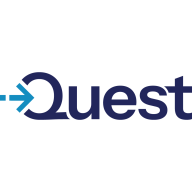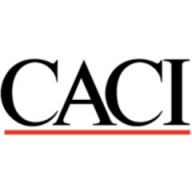

Erwin Evolve and Mood compete in enterprise architecture and business process modeling. Mood seems to have the upper hand with its advanced features and overall capabilities as a comprehensive solution, while Erwin Evolve stands out in competitive pricing and support.
Features: Erwin Evolve focuses on effective enterprise architecture management, integration with existing systems, and robust visualization tools. Mood is noted for advanced process modeling, customizable functionalities, and strong collaboration tools.
Ease of Deployment and Customer Service: Erwin Evolve provides structured deployment options with proactive customer service and comprehensive support materials. Mood offers a flexible deployment model, prioritizing ease of use and responsive support.
Pricing and ROI: Erwin Evolve has competitive setup costs and provides value through strong support and community resources. Mood, despite possibly higher initial costs, offers a favorable ROI with its advanced features and adaptability.
| Product | Market Share (%) |
|---|---|
| erwin Evolve | 3.4% |
| Mood | 1.0% |
| Other | 95.6% |

| Company Size | Count |
|---|---|
| Small Business | 7 |
| Midsize Enterprise | 2 |
| Large Enterprise | 12 |
erwin Evolve provides comprehensive graphical support for handling large data models. It offers features such as metadata access, version control, and model comparison, enhancing operational reports and system analytics through its collaborative web-driven design.
erwin Evolve facilitates reverse engineering and database integration, fostering collaboration and process exploration through its web interface. Customizable and easy to configure, it supports workflow configuration and architectural modeling. Users can utilize its capabilities for developing industry models, managing transformation programs, and presenting standard operating procedures. Despite its strengths, there are demands for improved integration, enhanced UML support, and a more modern user experience. Users also express challenges with legacy system updates and call for better connectors and collaborative features.
What are the key features of erwin Evolve?Data-driven organizations in sectors like finance and healthcare implement erwin Evolve for data warehousing, enterprise architecture, and business process modeling. They leverage its capabilities for cataloging architectural elements, linking to CMDBs, analyzing system interfaces, and describing business processes. Utilization extends to IT solution registration, business capability planning, and strategic modeling, with frequent deployments on cloud platforms to support transformation initiatives.
Mood offers insightful tools designed to enhance employee engagement and monitor workplace well-being through real-time analytics. Its advanced functionalities support organizations seeking to understand and improve their work environment effectively.
Mood stands out by providing an intuitive platform that captures vital employee feedback. By utilizing precise analytical tools, it aids organizations in identifying trends and areas for improvement within their teams. Its streamlined approach encourages open communication and fosters a more cohesive workplace culture. With Mood, users can easily implement ongoing improvements based on detailed insights and data-driven recommendations.
What are the key features of Mood?Mood is effectively implemented within industries like healthcare and technology, where understanding employee sentiments rapidly impacts service quality and innovation. Its flexible survey mechanisms and real-time data analysis cater to dynamic industry environments, facilitating a proactive approach to workforce management.
We monitor all Enterprise Architecture Management reviews to prevent fraudulent reviews and keep review quality high. We do not post reviews by company employees or direct competitors. We validate each review for authenticity via cross-reference with LinkedIn, and personal follow-up with the reviewer when necessary.